Guatemalan coup 1954 of the year
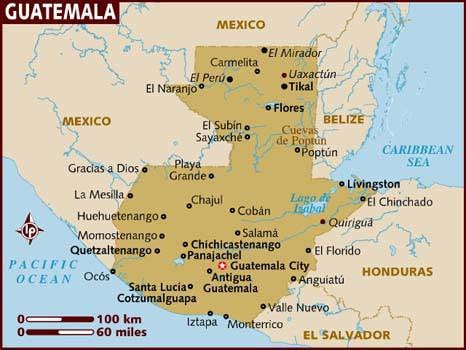
The final period of the Second World War for the Central American Republic of Guatemala was marked by events completely unrelated to the fight against fascism.
After 13-year tenure in power in 1944, he was forced to resign from the post of the head of state, General Ubiko, one might say, the classic Latin American dictator-general. He had to do this under pressure ... of teachers, who took to the streets in protest against the enrichment of a handful of dictator's friends by bringing all the rest of the country to poverty. The general tried, however, to retain the reins of power, having entrusted his protege, also General, Ponce Valdez, to the "kingdom", but in October 1944 two young officers, Major Francisco Arana and captain Jacob Arbenz, and civil, Jorge Toriello Garrio, led the coup d'état . The winners, however, did not abuse their power; they called an election, which was won by Juan Arevalo, a famous doctor and writer who had lived 14 years before in exile. The new leader pursued a policy of moral socialism "- encouraged culture and trade unions, pluralism and democracy. In foreign policy, he acted in a spirit that did not suit the US - he did not recognize the military regimes established in the region with their knowledge and consent, and accepted military regimes in Guatemala that were driven out of other countries of the region for political reasons. In the next elections, we will emphasize, honestly and democratically, without any violations, won with 65% of votes, the soul of the 1944 revolution, and the Minister of Defense, now Colonel Yakobo Arbenz, in the Arevalo government (in some sources his name is written as Jacobo, trying to read the rules of the Spanish language, but he is from a family of Swiss immigrants, and therefore his name is still Jacobo), which at the time of taking office was 37 years.
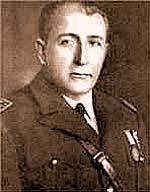 Former chapters of Guatemala, General Ubico
Former chapters of Guatemala, General UbicoThe new leader of the country, according to the Americans, paved the way to the establishment of communism, and behaved even more outrageous than its predecessor - especially depressed by the fact that he refused to send a contingent to Korea, and then started a land reform. The 900 Decree, by which name the main reform document is known, directly affected the interests of United Fruit, an American corporation, which in the previous century strengthened and expanded its presence in the countries of the region with the most predatory and gangster methods. In one of the departments of Guatemala, for example, the company owned 78% of the total cultivated land. The law provided for the distribution of land to peasants, for which the confiscation of large holdings with compensation by government bonds, and encroached on uncultivated land larger than 223 acres (1 ha = 2,4 acre). For “LF”, the danger was precisely in the last paragraph, because in order to avoid the expansion of competitors, it systematically bought up land throughout the country, so that 80% of its territory was not processed. Since the owner received compensation in the amount of the declared tax value of ownership, in this case the amount was 1,2 million, and the company, in no case, required 16 million, although it paid taxes as if it owned the price of 1 million. “LF” also owned the most powerful power plant and the country's only railway, and the next step of the government, by all indications, was to be the nationalization of the railway company and electrical engineering too. The corporation was not the first to encounter difficulties of this type, although they had never acquired such a scale before, and knew how to deal with them. During the five years of Arevalo’s reign and the two years of the presidency of the “red colonel” Arbens, 21 million dollars were spent to finance conspiracies and the opposition (taking into account macroeconomic factors, this amount is equal to 140 million modern dollars). However, as it turned out, the ideas of social justice are not so easily removed, and the company had to use its major contacts in the US government. Among others, among the “friends of the office” were the US government’s assistant on Latin American affairs, the US representative to the UN, the Secretary of Defense and the Minister of Commerce, and the notorious Dulles brothers (one - the Secretary of State, another CIA director) worked as lawyers at “LF”, and helped the 1936 Agreement of the Year between Ubico and LF. Soon the decision to intervene against Guatemala was made. The “communist” background of Arben's actions added fuel to the raging fire of the thirst for revenge on Americans, although the communists themselves had very little representation in parliament and government, and mainly provided support to the unions in exchange for the authorities' tolerance. Given the position of the party under Arevalo, this was already progress, but at a pace before gaining real power in the country, they would need another 1-2 presidency.
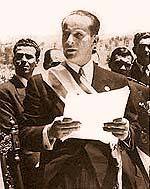 Captain Jacobo Arbenz
Captain Jacobo ArbenzIt was decided under the auspices of the CIA to knock together from the opponents of the government of Arbens and the losers of the conspiracies against him who had gone abroad, the invading army, properly prepare the ground in the country itself and then carry out the intervention.
LF was supposed to cover a considerable part of the preparation costs, and by January 1954 she invested more than 2 million. Former head of the plot was Castelo Armas, former colonel of the Guatemalan army, who had fled to Honduras. The existence of Armas in Tegucigalpa became the talk of the town throughout the region, because it hired personal security personnel in 34, started a network of informants in the ranks of immigrants, limousines and houses, denied himself a little and his existence cost 30 thousand dollars per month . The CIA report from 1953, in passing and very discretely, also states that the relationship between Armas and the (unidentified person) is “is confused”. Armas himself plotted to invade Guatemala at his own peril and risk, the Americans decided to support this undertaking after a significant modernization of his concept, for which 2,7 million was allocated from state funds, including on psychological warfare and political actions 270 th.
For propaganda in the western hemisphere, it was decided to choose three topics - the failure of land reform; evidence of economic collapse; evidence that only the Communists are enriched. And it was also true materials - for example, the campaign to eradicate illiteracy was bogged down, since many teams were engaged instead of direct responsibilities in communist-style education. For processing officers of the Guatemalan army, a multi-stage program was approved to instill proper sentiment, partly focused on real affairs, and partly on pure hoaxes - the introduction of political commissars, the expansion of military service and the placement of those drafted weapons not enough in the labor battalions. Since the officers in Guatemala were traditionally recruited from the middle and upper classes of society, many of them did not like the transformations, and all the more accompanied their difficulties. Even one of the heroes of the 1944 uprising of the year, Francisco Arana, participated in one of the military conspiracies (and died). As a counterweight to a not very reliable army, a workers 'militia was established - and many officers finally turned over to the side of the rebels after the organization of the workers' militia, which Arbens acquired the newest Belgian rifles. Means for preparing interventions were used very different - there was a place and sermons in churches, where it was supposed to make speeches about how soon churches would turn into meeting rooms for militant atheists, forcefully force children to join the pioneers, and instead of icons in churches and houses there would be portraits of Malenkov , Stalin and Lenin. The organizers of the rebellion also conceived, hoping to bring recalcitrant people to collapse, put pressure on oil-supplying companies to reduce their stocks in Guatemala and decided that they would find red worms in the next batch of local coffee and therefore stop exporting. All this, perhaps, would not be worth listing in detail, but all the technology was used with minor adjustments also when organizing the invasion of Cuba of immigrants, and who knows, maybe there will be someplace else. In fact, the whole system was tested again after thirty years on the Sandinista, which, however, survived with the help of the socialist bloc.
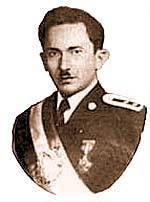 Former Colonel of the Guatemalan Army Castillo Armas
Former Colonel of the Guatemalan Army Castillo ArmasGuatemalan authorities have since discovered preparations, and in case of war a plan was drawn up for Quetzaltenango, to which several military units were transferred, as well as one of the most capable commanders (he is also one of the most capable commanders secretly recruited by the rebels). Some actions of a political nature played into the hands of opponents - 5 May 1954, for example, the government took action against the opposition press - radio stations smashed, and the staff beat; The 37 article of parliamentary decree number 372 now required all private stations to record and submit all entries to censorship in 24 hours. For the Americans, at the end of May, according to official documents, the arrival of a steamer with a weapon flying under the Swedish flag from Stetina to Dakar, and found about 10 thousand rifles and 100 million cartridges plus mortars, became a red rag for the bull. Moreover, the plantations of another American corporation in Honduras in May were swept by a general strike, in which about 60 thousand people took part, and the responsibility for which was laid on the Guatemalans.
In May, the 1954 “troops” of Armas were concentrated near Copan in Honduras. The Americans before the invasion thought it was to increase the pressure by political assassinations and made a list of high-ranking officials to be eliminated by 58, but they decided that 20 would be enough. On the houses of the “communists” they wrote “you have 5 days left”, “a spy lives here”, sent wooden coffins and stuffed hangers, and after killing one of the parliamentarians several colleagues of the deceased received the letters “you are next”. At the SLA conference, under American pressure, it was decided to consider the existence of communist governments in the region dangerous for international security; The foreign minister of Guatemala, Toriello, in his response speech calling it “the internationalization of McCarthyism”, “burning books” and “introducing stereotypes”, received the applause of the hall twice, but in voting the resolution was adopted with a single vote against Guatemalan, and most of all supported the adoption dictators of the region (Peru, Venezuela, Nicaragua, Cuba, Dominican Republic). In June, the government took further steps to consolidate the government “in case of rainy days” - it suspended the effect of constitutional guarantees, seized copies of opposition newspapers and intended to impose a curfew; all this was used by opponents to dispel rumors that the leadership was going to devalue 10 to 1 quetzal, so urgently need to spend money on food and long-term goods, that Arbens himself ran away for a long time, that they will introduce food cards, and for money they will be banned from selling, they themselves will withdraw the money as part of a compulsory loan, etc. etc., over which the organizers of spreading rumors laughed at themselves in personal correspondence. 18 June US hands “army of 2000 freedom fighters” (actually around 300 people, according to all who organized the CIA), invaded the country. The event was accompanied by a powerful, unceasing campaign, and the forces of the invaders were constantly overstated. Propaganda sometimes even told the truth - as the head of the peasant association said that the country did not need concentration camps, because the peasants would cut off the heads of all the reactionaries, which broadcast the government radio, and then some fiction for the benefit of the interventionists. The first battles took place in the east of the country, and the interventionists were defeated, however. Nevertheless, the “guests” radio station continued to trumpet about successes and achievements, the army ceased to obey the leadership and behaved more and more aggressively and intolerantly toward government policies, so that the country's leaders themselves had the impression that their business was gone.
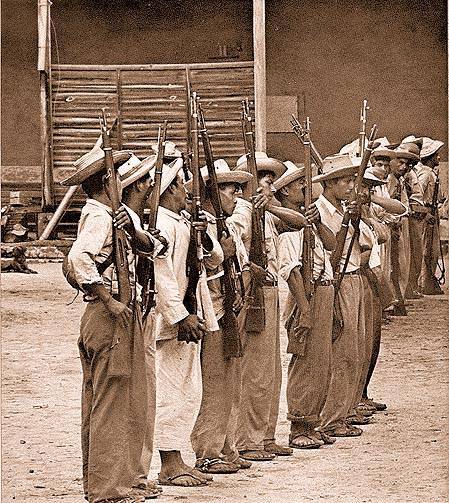
The threat of an American invasion of full force following the failure of the Armas mission seemed to many centrists and leftists close to power inevitable, and hoping to remain in power, representatives of the groups with such views forced Arbens to resign, hoping in this case to satisfy the Americans by removing the Communists from power and suspension reform, and yet keep Guatemala on the same course. Arbenz went to Mexico, from there to Eastern Europe, and ended his days in Uruguay and again in Mexico. Such ideas were not destined to be realized, since everything was already decided in another country. Two days, from 27 to 29 June, was led by Defense Minister Colonel Carlos Enrique Díaz de Leon, appointed by Arbens, at the head of a three-colonel junta. June 29 with the direct and active participation of the Americans formed a new junta, in which there were two supporters of the interventionists, but Diaz de Leon was absent. 3 July 1954, when Colonel Castillo Armas arrived (“who was at the forefront of the fighting in the east of the country”), began the formation of a new junta: Armas headed it, and the entire team was recruited from United Fruit sympathizers. The embassies of the Spanish-American countries were overflowed with professors, trade union leaders and other “enemies of the state” who suspected, and not without reason, the new authorities in dislike for themselves.
The international community, in the face of those who received requests for assistance from the UN Security Council and the USSR, did not manage to do anything; The UN Security Council issued a decision to transfer the investigation and resolution of the issue to the Organization of American Countries, which was completely controlled by the Americans, for which purpose the transfer of the full authority to the said organization, the Soviet Union reasonably imposed a veto, although the vote count was 10-1. American politicians, by the way, warned against a dangerous precedent to transfer the case from the UN to a local organization, since such foci may entail the practice of transferring affairs in Asia, for example, to China. Free and free elections were appointed, and to guarantee the desired results, illiterates were deprived of the right to vote (more precisely, they voted openly), thereby cutting off 70% of the population. All reforms of previous democratically elected governments were abolished and curtailed. On the reversion of land reform, 300 thousand hectares (from 603 thousand distributed) were taken, mainly “LF” lands.
In fact, a handful of mercenaries won the war (no more than 400 people), a lot of American money invested in the propaganda, and several pilots hired to throw leaflets and bombs on the capital. The total number of casualties on both sides was about 100 people.
It remains to be said about the consequences of the overthrow of a democratic, lawfully elected government. Armas himself after his triumph lived less than three years, and was killed by a soldier of his own army, but after his death the country followed the course laid for it. All the questions that the two reformist governments tried to solve were never resolved. It was these two factors that served as the main catalysts of the civil war that followed in Guatemala since the 60-s, which lasted 35 years and cost the country a 14-million population of 150 thousands of dead and 50 thousands missing.
Information